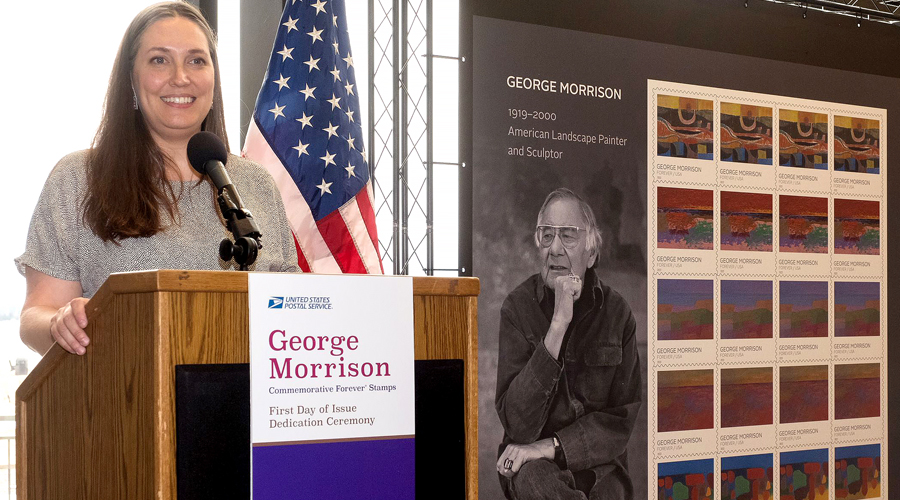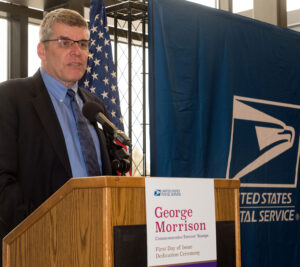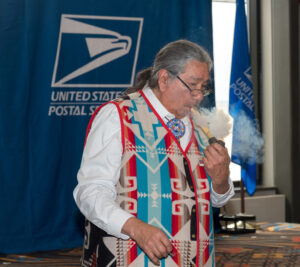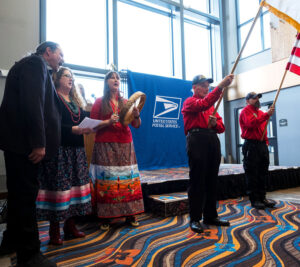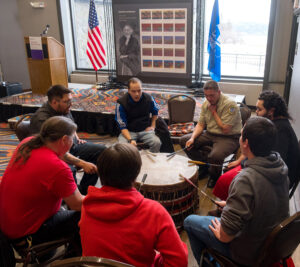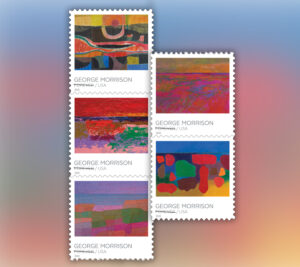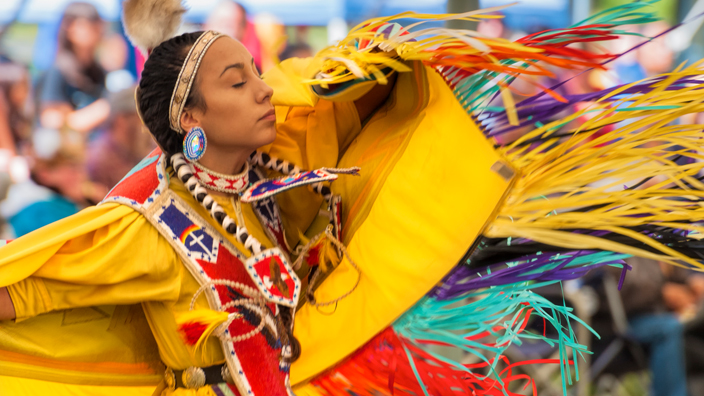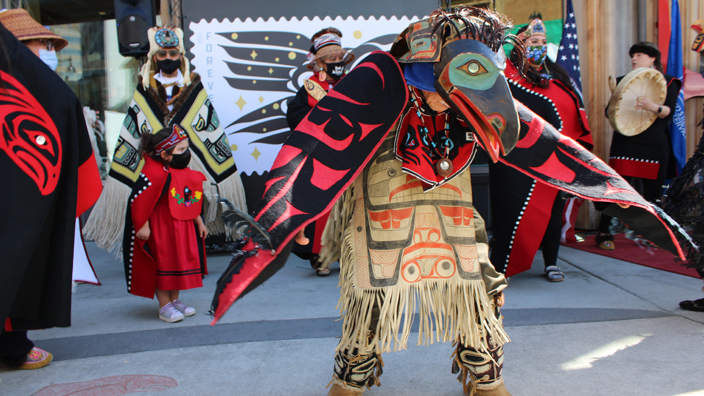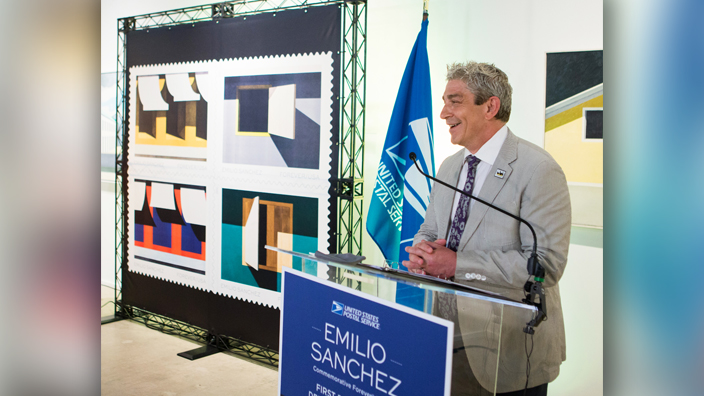Stamps honoring the work of Chippewa artist George Morrison were dedicated April 22 at Grand Portage Lodge and Casino in Minnesota.
“George Morrison challenged prevailing ideas of what Native American art should be, arguing that an artist’s identity can exist independently from the nature of the art he creates,” said Steve Monteith, the Postal Service’s chief customer and marketing officer, who spoke at the ceremony.
David “Niib” Audib performed a pipe ceremony to open the event, and traditional drumming and vocalizing by the Stonebridge Singers were featured.
Also attending the event were artist Hazel Belvo, who was married to Morrison from 1960 to 1991, and their son, musician Briand Morrison.
“It is so appropriate that he is being honored with his work printed on United States postage stamps because he loved stamps,” Belvo said.
“He collected stamps. He saved stamps. If you were lucky enough to get a letter from him, on the envelope would be several stamps that added up to the current cost of the letter. I always thought it was like him making a collage,” Belvo said. She and Morrison were big on communication by letter, she said, right up until his death.
Morrison was born in 1919 in Chippewa City, MN, near the Grand Portage Reservation on the north shore of Lake Superior.
As a young man, he studied at the Minneapolis School of Art and the Art Students League in New York City. His first solo exhibition was held in New York in 1948 and was well-received by critics.
A Fulbright scholarship in 1952 led him to France, where he studied European art. He taught at several schools upon his return to America.
A watershed moment personally and professionally came in 1968, when Morrison won the grand prize at the Fourth Invitational Exhibition of Indian Arts & Crafts in Washington, DC.
Before that, Native American art shows rejected his work as “not Indian enough,” he said.
The 1960s and 1970s were a time of rising interest in American Indian identity, and that was true for Morrison, too. He became more conscious of his heritage as a Chippewa while simultaneously honing his modernist approach to art.
The Forever stamps come in panes of 20 and include five of the artist’s abstract landscapes, three of which reference Lake Superior in their titles.
